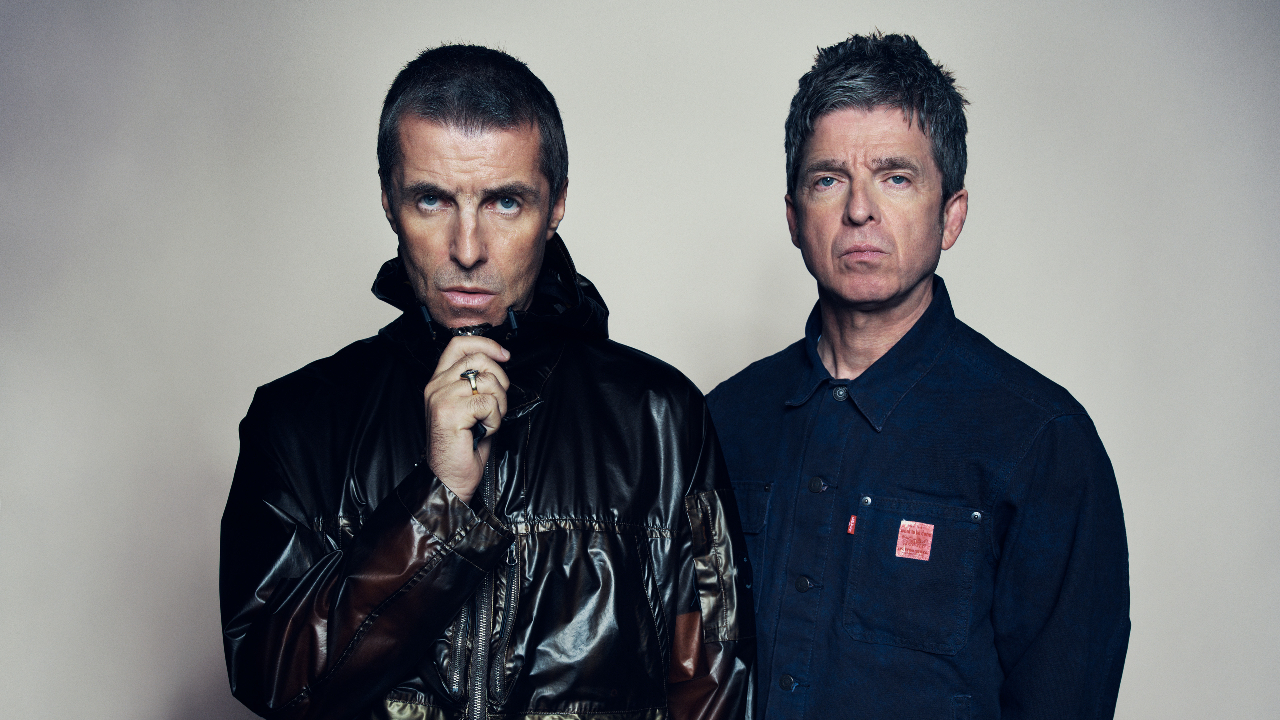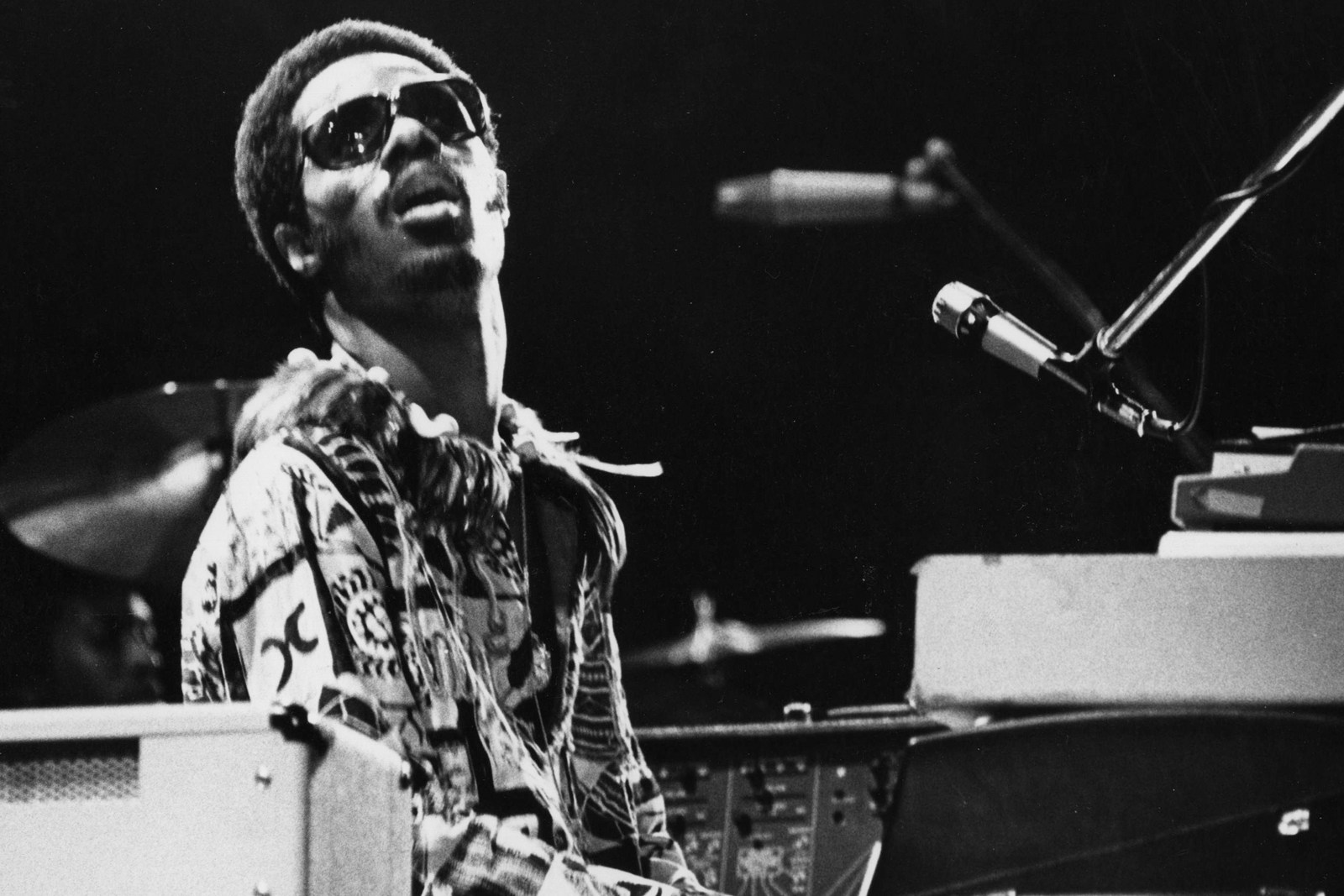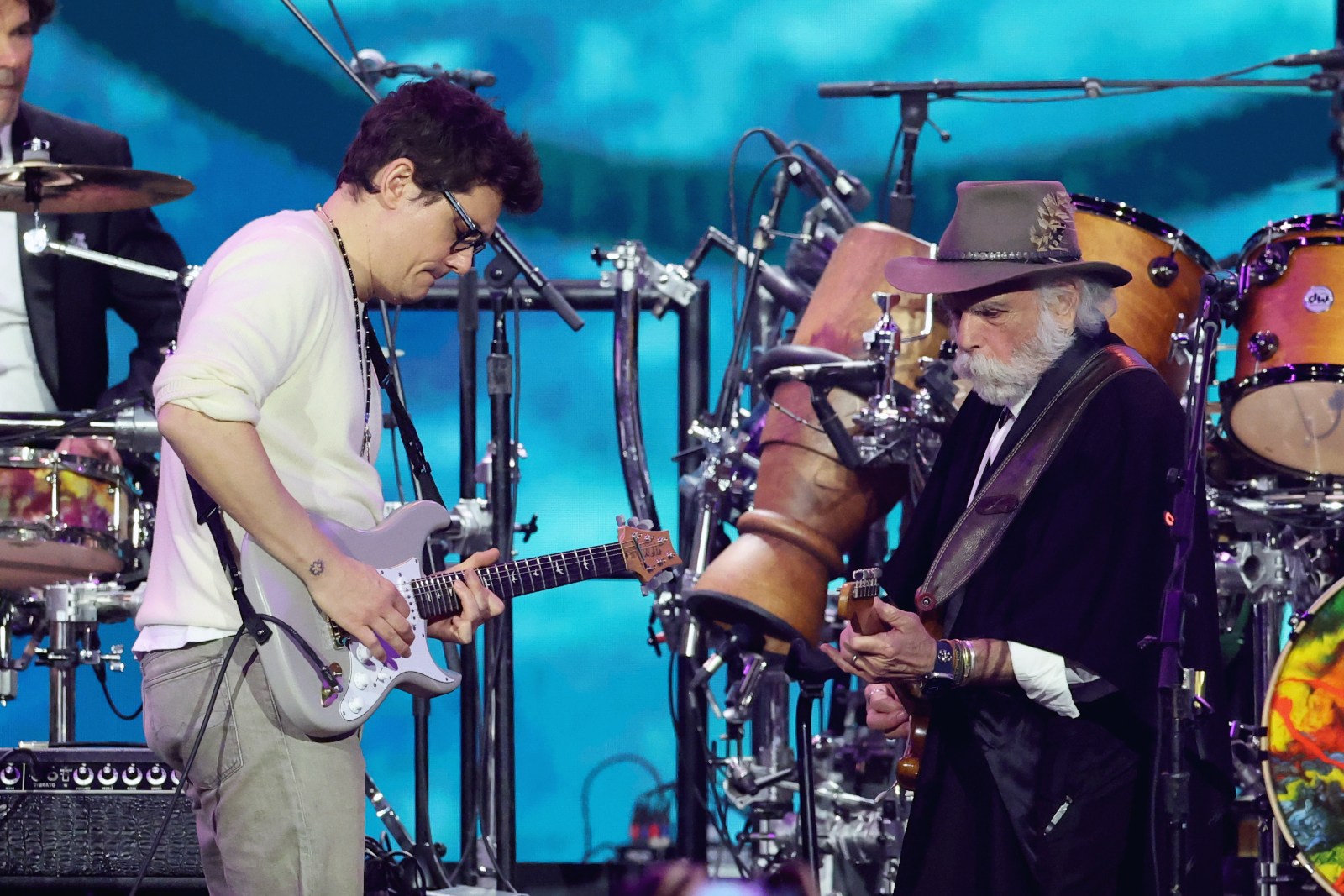Side 1, Song 1—for every album, it’s the one that starts it all, the one that draws you in, the kickoff to your listening experience. The best album-opening tracks are not only quality songs; they also set an expectation of what is to follow. Think about AC/DC‘s “Hell’s Bells,” Bob Dylan‘s “Like a Rolling Stone,” The Beatles‘ “Come Together”—each song not only provides its own moment of impact, but it also acts as a gateway to a classic collection (Back in Black, Highway 61 Revisited, and Abbey Road, respectively). Listening to those albums would be a lesser experience without those cuts leading the way.
Over his long career, Bruce Springsteen has created a number of exemplary records, many kicked off with exceptional album-opening songs. Of course, occasionally, he makes a dud, too (not even the Boss is perfect). Below, we rank the Side 1, Song 1 tracks for each of his studio LPs (no EPs, live records, or compilations), in terms of both overall quality, and how they introduce the albums they lead off. Check ‘em out and see if you agree.
21. “Outlaw Pete,” from Working on a Dream (2009)
One of the great head-scratchers in Springsteen’s oeuvre—a juvenile and interminable song about a gunslinger who “robbed a bank in his diapers and his little bare baby feet,” among other silly things that Springsteen rattles off over the course of eight minutes, possibly nicking the melody of a Kiss hit as he does it. This is the kind of cut that should have been buried in a vault beneath Giant Stadium and discussed in reverent tones by Boss bootleg fans who had never actually heard it—but no. He led off an album with it, and then spent around half of the 100-plus shows of the subsequent tour playing it in the first five songs of a given night’s entertainment.
20. “High Hopes,” from High Hopes (2014)
Tom Morello, for all his fire and fury, doesn’t play the guitar so much as coax sound from it, and while such an approach sounded revolutionary in Rage Against the Machine and mildly awesome in Audioslave, in the context of the E Street Band, the novelty wears off quickly. Having Morello sit in for Steve Van Zandt on the band’s 2013 Australian tour and the recording of 2014’s High Hopes album was not quite the successful move Springsteen had likely anticipated. If you’d like to hear a superior version of High Hopes‘ title track (and we highly recommend doing that), you can find it on the Blood Brothers EP from 1996.
19. “Hitch Hikin’,” from Western Stars (2019)
“Hitch Hikin'” begins Western Stars with a rather banal lyrical conceit—the protagonist is a guy who likes thumbing for rides. That’s it. That’s what the song is about. It’s a yawner that begins a gorgeous record, one replete with strings and melodies that sound like immediate classics and a handful of core songs (“There Goes My Miracle,” for example) that could and should be included in any discussion of Springsteen’s late-career highlights.
18. “Only the Strong Survive,” from Only the Strong Survive (2022)
We would have loved to have gotten an album of soul covers from late-’70s/early-’80s Bruce Springsteen, when he and the E Street Band seemed to channel energy from stacks of melted-down Sam and Dave, Little Richard, and Motown 45s every time they took the stage. As it was, we didn’t get such a record until the Boss was 73 years old, and while Only the Strong Survive is not a bad album (much of it is actually quite good), he can’t help but approach the material as an elder statesman, with an elder statesman’s voice, timeworn and wise. The Jerry Butler song that begins the record and gives it its title puts that voice to appropriate use, even though we keep wanting to hear it sung by our favorite septuagenarian’s more youthful counterpart.
17. “We Take Care of Our Own,” from Wrecking Ball (2012)
Wrecking Ball‘s first blast is this loud and proud paean to circling the wagons in the face of indifference from those whose task it is to lend aid and assistance. Points docked for Springsteen pronouncing cavalry as Calvary in the line “There ain’t no help, the cavalry stayed home”—obviously, there was no one in the room with enough juice or authority to correct him.
16. “Better Days,” from Lucky Town (1992)
Though Lucky Town is arguably the better of the two albums Springsteen released simultaneously in 1992, its leadoff track is one of its lesser songs. “Better Days” finds him bemoaning the fact that he bemoans the fact that his celebrity is occasionally tiresome, or, as he sings, “like eating caviar and dirt.” Poor guy. Points again docked for inadvertent comedy, this time due to his mixed metaphors (“Well, I took a piss at fortune’s sweet kiss”). The song’s pluses are its loud guitars and the moments when Springsteen’s contentment comes through as a comfort, as in the chorus.
15. “Old Dan Tucker,” from We Shall Overcome: The Seeger Sessions (2006)
When word came down that Springsteen would be releasing an acoustic album of songs made famous by Pete Seeger, we recall sighs of disappointment and a general moaning and/or groaning that we would have to wait even longer for a real Bruce Springsteen record to come out. It was silly to be so whiny—We Shall Overcome, recorded with a band of largely unknown musicians, is a burst of energy and spirit, with Springsteen at the vibrant center of the proceedings. “Old Dan Tucker” kicks in and demonstrates the dynamics in play immediately, as Springsteen, clearly having a lot of fun, leads the fiddle, the banjo, the organ and guitars and horn section in a playful romp through a song that would have topped the charts in the mid-19th century, had such charts existed then.
14. “Ain’t Got You,” from Tunnel of Love (1987)
Tunnel of Love is such an emotionally heavy record—weighed down with Springsteen’s doubts about marriage and confusion about his role as a husband, as he suspected the commitment he’d made might have been a mistake. Songs like “Two Faces,” “Brilliant Disguise,” and “One Step Up” follow through on those suspicions. So of course he starts the album with the lightest thing he could probably think of. With all its braggadocio, “Ain’t Got You” is a goof, a joke, a straight jab that hides the uppercut that’s about to knock you out.
13. “Lonesome Day,” from The Rising (2002)
“We need you,” a fan told Springsteen shortly after 9/11, and he responded by bringing together the E Street Band as a collective for the first time in years, for an album of songs (The Rising) that addressed the human responses to the attacks in all their confusion, anger, and resilience. And while his stabs at falsetto and the “It’s alright!” chorus could grate on the nerves with repeated listening, “Lonesome Day”‘s undercurrent of strings and propulsive rhythm track more than compensate, yielding a striking start to a record we all needed.
12. “One Minute You’re Here,” from Letter to You (2020)
By 2020, Springsteen realized he had outlived many of his old friends and bandmates—a fact responsible for the scrim of melancholy that covers Letter to You and that informs “One Minute You’re Here,” its gentle opening track. Springsteen flashes past a handful of images that evoke the brevity of moments—a train going by, a river flowing past, a carnival in the waning autumn—in a kind of meditation brought about by the passing of George Theiss, his compatriot in the Castiles, the garage rock band they fronted in the mid- and late ‘60s. It’s a lovely though low-key introduction to a moving album.
11. “Devils & Dust,” from Devils & Dust (2005)
The title track of Devils & Dust finds two soldiers in the desert, trying to focus on the duty before them and past the knowledge of how the experience will color the rest of their lives. It’s stark, foreboding stuff, just one of a number of finely crafted stories Springsteen tells on the album.
10. “The Ties That Bind,” from The River (1980)
You can play The River on the most expensive stereo equipment you can find and it will still sound like it’s coming out of an AM radio or a jukebox—and that’s a good thing. “The Ties That Bind” begins the record with a character study, that of a strong, independent woman nonetheless hurting from a heartbreak and pushing away from the one man who might heal her (guess who?). The music is a downhill roll, with guitars riding up front and the rhythm section running hard under the hood, everything giving the listener a pretty accurate foreshadowing of what’s to come once they get to the next song and beyond.
9. “The Ghost of Tom Joad,” from The Ghost of Tom Joad (1995)
With John Steinbeck’s The Grapes of Wrath and the protest songs of the early folk era as his forebears, Springsteen tells the story of the downtrodden individuals and families on the precipice of desperation, living on the lonesome outskirts of a population or in the cluttered heart of its cities—all with “No home, no job, no peace, no rest.” This is a heavy weight for any song to bear, and it turned off his more casual listeners—those looking for uplift, or, lacking that, Springsteen’s usual artful take of the workings of the heart. Those willing to come along with him in that search for Tom Joad’s spirit, though, are rewarded with rich narratives and striking performances, beginning with this dour but resonant tale.
8. “Human Touch,” from Human Touch (1992)
Springsteen’s California Years start here, with studio pros subbing in for most of the E Streeters (only Roy Bittan was retained) and a sheen of slickness brushed across the whole of Human Touch. The album is rightfully pilloried for its production and dearth of New Jerseyans; the title song, however, is a dynamic blast that busts through the veneer, thanks to both the music and the wise, vulnerable lyrics about the need for safety in a relationship and the “hard, hard price” it exacts.
7. “The E Street Shuffle,” from The Wild, the Innocent, and the E Street Shuffle (1973)
Turns out, the Jersey kid that CBS tried to sell to people as a folkie in January of ‘73 led a pretty awesome band that could play tricked-out rock ‘n’ soul five sets a night, any night of the week (maybe every night of the week). So by November, Springsteen launched another platter into the marketplace, seven songs that showed off perhaps his truer self—replete with the funky strut he’d developed at Asbury Park joints like the Student Prince, the Upstage, the Sunshine In, and the Stone Pony. There was energy here, a quick pulse, and the promise of a good time—everything he needed to tide folks over until the big breakthrough, a little further down the line.
6. “Radio Nowhere,” from Magic (2007)
For years during his concerts, Springsteen would pause in the middle of an ecstatic moment and shout to the audience, “Is there anybody alive out there?” Of course, the crowd would howl in response, proving there were, indeed, plenty of living souls in the house. It took until 2007 for him to ask the question on record; we’re pretty certain the answer was the same.
5. “Nebraska,” from Nebraska (1982)
The spookiest songs Springsteen ever committed to tape were the ones he recorded at home in late ‘81 and early ‘82, feeling around for a groove or a melody, or a way to more easily translate what was in his head into a form his band could understand and emulate. The latter never really happened, at least not with the songs that comprised Nebraska. The title track is the perfect introduction to the record, told in the voice of Charles Starkweather, the unrepentant murderer of eleven random people, ten of them killed during a nine-day spree in 1958. “They want to know why I did what I did,” Springsteen sings, echoing Starkweather’s cold words, “Well, sir, I guess there’s just a meanness in this world.”
4. “Badlands,” from Darkness on the Edge of Town (1978)
“Badlands” expresses the frustrations of the working men and women who put in their hours and have little to show for it but the privilege of getting up the next day to do it once again. “You spend your life waiting for a moment that just don’t come,” Springsteen all but shouts, and in a moment of defiance, spits out a solution—”Well, don’t waste your time waiting.” The music surrounding that declaration, pushing it, is the hardest rock Springsteen had ever come up with; it doesn’t throw down a gauntlet so much as use it to slap the nearest brute trying to keep him in place. Some believe Darkness on the Edge of Town to be his best record—an assertion difficult to argue against when the songs have this kind of wallop.
3. “Born in the U.S.A.,” from Born in the U.S.A. (1984)
The shot heard ‘round the world, with a martial keyboard riff from Roy Bittan, Max Weinberg‘s cannon-blast drums, and Springsteen, having just gargled glass, declaiming with stadium-rattling volume the plight of a downtrodden Vietnam veteran, “ten years burnin’ down the road” and in a very bad way. It is the sound of defiance; a sound of loud rock ‘n’ roll; a sound of 30 million records about to be sold.
2. “Blinded by the Light,” from Greetings from Asbury Park, NJ (1973)
The exhilarating wave of words that comprise each of the six verses here introduced us not to the latest New Dylan, as advertised, but to an energetic young poet, stoked by R&B and slamming his fists on the walls of expectation. What an “all-hot half shot” or “some fresh-sown moonstone” or “go-cart Mozart” were, was largely immaterial. This was a new voice we hadn’t expected, one that would one day give off tremendous power, create new worlds, and inspire generations of like-minded artists. One that would literally change lives. It all starts here.
1. “Thunder Road,” from Born to Run (1975)
Born to Run was cinematic in its scope, literary in its storytelling, and Spectorian in its sonic ambitions, and it all kicks off with “Thunder Road,” one of the great pleas for escape ever committed to vinyl. It begins with an evocative image: “The screen door slams, Mary’s dress sways” (or “waves”—Springsteen himself confused the matter), then shuttles between promises unkept and new promises made, before couching the proposed getaway in the most invigorating, exciting terms the young protagonist can offer (“These two lanes will take us anywhere … heaven’s waiting down on the tracks”). By the time the instrumental coda begins, you can imagine the couple merging onto the highway, with a “town full of losers” getting smaller behind them, and a world of possibilities stretched out ahead.
Bruce Springsteen Live Albums Ranked
Longtime fans will tell you his studio records are only half the story – concert performances are the other, and maybe more essential, part.
Gallery Credit: Michael Gallucci















